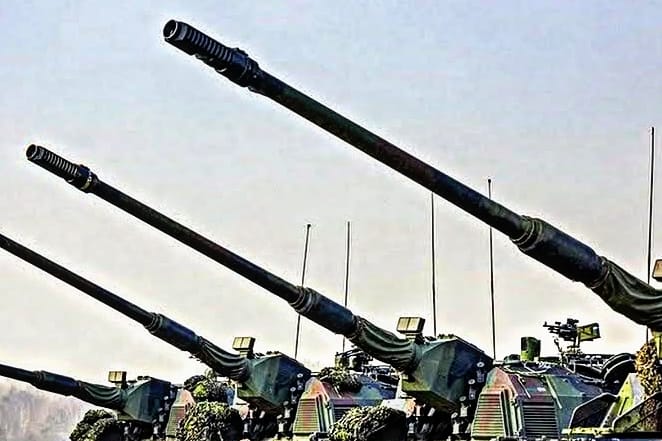Artillery has been a cornerstone of military power for centuries, playing an integral role in shaping the outcomes of battles and conflicts. From the early days of cannons and siege weapons to today’s advanced, precision-guided artillery systems, the evolution of this weaponry has been marked by innovation and adaptation to changing military needs. In this article, we will explore the history, types, advancements, and modern applications of artillery, and examine how it continues to evolve in modern warfare.
What is Artillery?
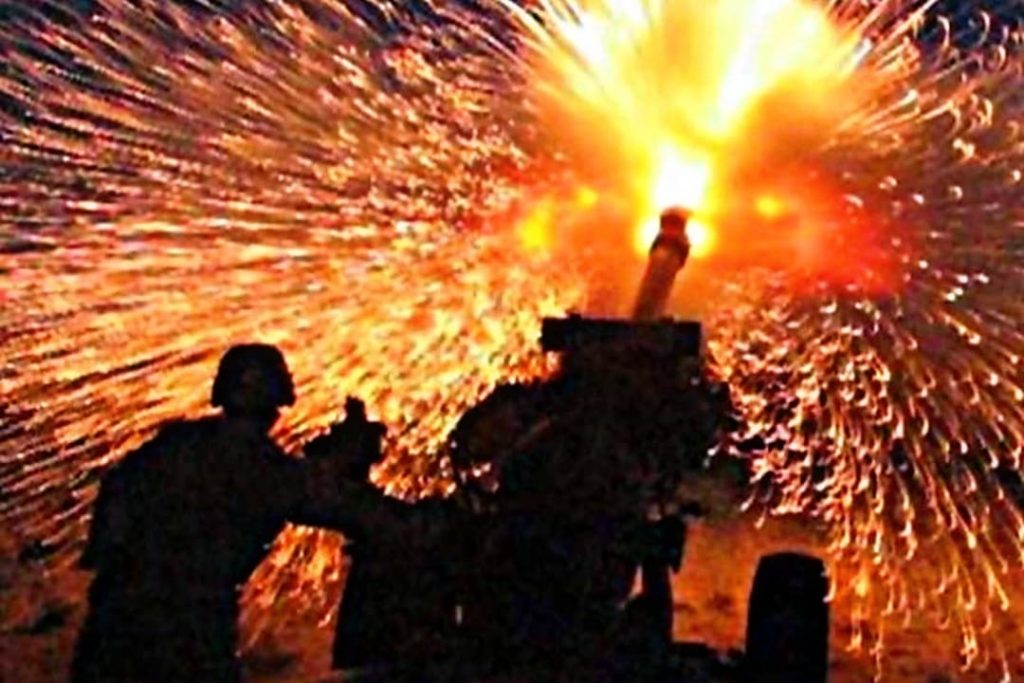
Artillery refers to large-caliber firearms, typically mounted on vehicles, ships, or stationary platforms, designed to fire munitions over long distances. These weapons are used to deliver powerful explosive projectiles (shells) to enemy positions, often causing significant damage to personnel, infrastructure, and equipment. Artillery systems are typically divided into three main categories: field artillery, air defense artillery, and coastal defense artillery. The term “artillery” can encompass everything from traditional howitzers and cannons to modern self-propelled guns and rocket artillery systems.
A Brief History of Artillery
Artillery’s origins date back to ancient siege warfare, where rudimentary stone-throwing devices such as catapults and trebuchets were used to breach fortifications. The first major leap in artillery technology came with the development of gunpowder and cannons in the 15th century. These early firearms revolutionized the battlefield and paved the way for more advanced forms of artillery.
By the 18th century, artillery had become a mainstay in warfare, with the development of the cannon becoming more refined. The Napoleonic Wars (1803–1815) saw artillery take on a central role, with heavy cannons and howitzers deployed in massive numbers to support armies in the field. The advent of rifling in the 19th century further improved the range and accuracy of artillery, setting the stage for the next great leap in firepower.
The 20th century witnessed the most significant innovations in artillery, with the development of modern howitzers, anti-aircraft guns, and rocket artillery systems. The two World Wars saw artillery become an even more vital part of military strategy, particularly in trench warfare and large-scale bombardments. World War I, in particular, marked a turning point in artillery, as it was used extensively in the battle for trench supremacy, with artillery barrages being key to both offensive and defensive operations.
Types of Artillery
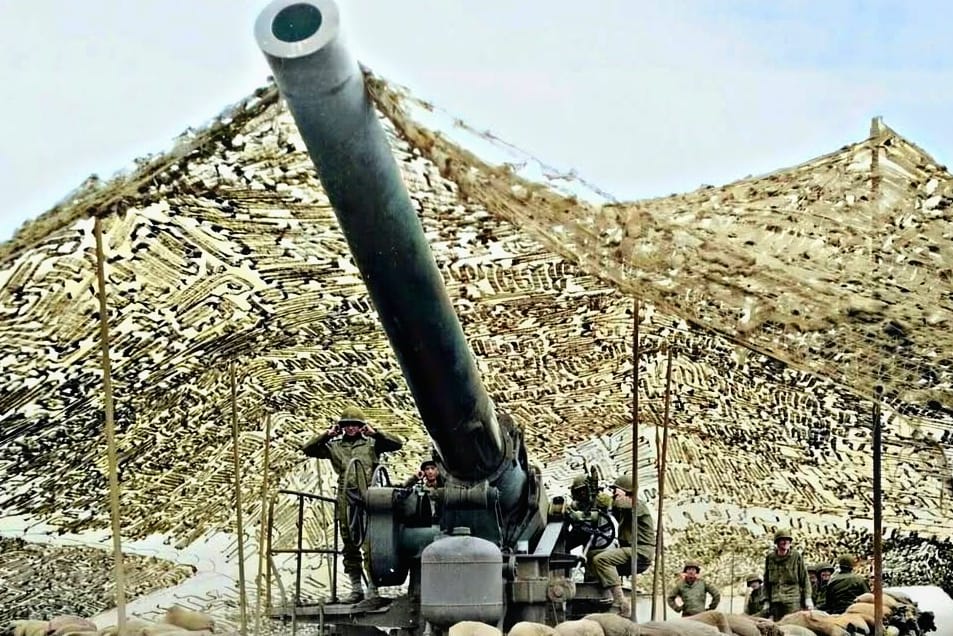
Artillery can be broadly categorized based on the type of weapon, its mobility, and its intended role. Here are the primary types of artillery:
1. Field Artillery
Field artillery refers to mobile guns that can be easily moved across the battlefield to support infantry and armored forces. These weapons are typically designed for long-range bombardment, using shells to hit enemy targets at varying distances.
- Howitzers: Howitzers are versatile artillery pieces that can fire shells at both high and low angles. They are used for a wide range of missions, including bombardment, counter-battery fire, and close support for infantry. Modern self-propelled howitzers, such as the American M109 Paladin and the German PzH 2000, combine mobility with the power of traditional towed howitzers.
- Guns: While similar to howitzers, guns have longer barrels and are primarily designed for firing shells at relatively flatter trajectories. These weapons have largely been replaced by howitzers in modern artillery but are still used in specific circumstances, such as coastal defense.
- Mortars: Mortars are short-barreled, portable artillery pieces designed to fire shells at steep trajectories. They are ideal for close-range bombardment, and can be easily maneuvered by infantry units. Mortars come in a variety of sizes, from light mortars (60mm) to heavy mortars (120mm and above).
2. Anti-Aircraft Artillery
Anti-aircraft artillery is designed to target and destroy aircraft. These weapons can be mounted on vehicles or stationary platforms and typically fire rapid bursts of ammunition to track and intercept aerial targets.
- Autocannons: These are fast-firing cannons used to engage low-flying aircraft. The famous German Flak 88mm gun, used during WWII, was a highly effective anti-aircraft weapon, and its modern descendants are used today by militaries around the world.
- Anti-Aircraft Guns: Larger caliber anti-aircraft artillery, such as the 20mm and 40mm Bofors guns, are employed for shooting down enemy planes at high altitudes. These guns are effective against both fixed-wing aircraft and helicopters.
3. Coastal and Naval Artillery
Naval artillery consists of large-caliber guns mounted on warships, designed for both surface and air engagements. Coastal artillery, on the other hand, is used to protect shorelines and critical infrastructure from naval threats.
- Naval Guns: Modern warships, such as destroyers and cruisers, are equipped with advanced naval guns, including the 5-inch (127mm) Mk 45 naval gun system. These guns are used for both land bombardment and anti-aircraft defense.
- Coastal Defense Artillery: Coastal defense artillery systems are stationary weapons designed to defend ports, harbors, and coastlines from enemy ships. These include powerful coastal guns and anti-ship missile systems.
4. Rocket Artillery
Rocket artillery uses rockets instead of traditional shells to deliver firepower across a range of distances. These systems are generally more accurate and powerful than traditional artillery pieces.
- Multiple Launch Rocket Systems (MLRS): MLRS are mobile artillery platforms that can launch a variety of guided and unguided rockets. These systems are capable of launching a barrage of rockets in rapid succession, providing overwhelming firepower. The M270 MLRS and HIMARS (High Mobility Artillery Rocket System) are notable examples.
- Tactical and Strategic Rocket Systems: These systems, such as the Russian “Iskander” and the American “ATACMS,” are used for long-range strikes, targeting strategic military and infrastructure sites. These weapons offer significant advantages in terms of precision and payload capacity.
Modern Advancements in Artillery
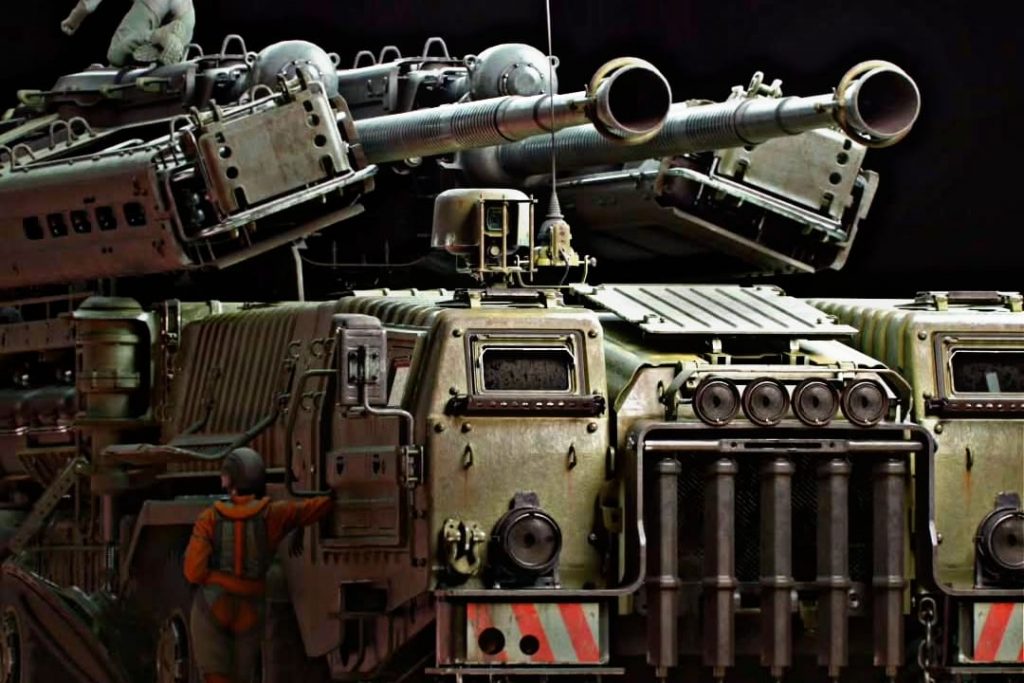
Artillery has undergone significant technological advancements over the past few decades. Today, modern artillery systems are more accurate, powerful, and versatile than ever before. Some key advancements include:
1. Precision-Guided Munitions (PGMs)
The development of precision-guided artillery shells has transformed artillery’s effectiveness in modern warfare. Unlike traditional shells, which were guided only by trajectory, PGMs are equipped with GPS or laser guidance systems, allowing them to hit targets with pinpoint accuracy. This reduces collateral damage and ensures that artillery can strike high-value or time-sensitive targets.
Notable examples include the U.S. M982 Excalibur shell and the Russian Krasnopol guided artillery shell. These PGMs are often used in close support roles, where precision is crucial to avoid friendly fire and civilian casualties.
2. Automated Artillery Systems
Automated systems have greatly improved the speed and efficiency of artillery. These systems, such as the Russian “Koalitsiya-SV” or the South Korean “K9 Thunder,” can automatically load shells, aim, and fire without the need for a large crew. This reduces the time between firing rounds and enhances battlefield efficiency.
3. Self-Propelled Howitzers
Self-propelled howitzers combine the mobility of armored vehicles with the firepower of traditional artillery. These weapons can be quickly repositioned to different areas of the battlefield, providing both offensive and defensive fire support. Modern self-propelled howitzers, such as the French CAESAR and the U.S. M109, can be operated by smaller crews and offer a higher rate of fire compared to traditional towed artillery.
4. Counter-Battery Radar Systems
One of the challenges of artillery is the vulnerability of artillery positions to counterfire. Counter-battery radar systems are used to detect the origin of incoming artillery rounds and quickly return fire. These radar systems, such as the U.S. AN/TPQ-36 and the Russian Zoopark-1, can pinpoint the location of enemy artillery, enabling faster retaliation.
The Role of Artillery in Modern Warfare
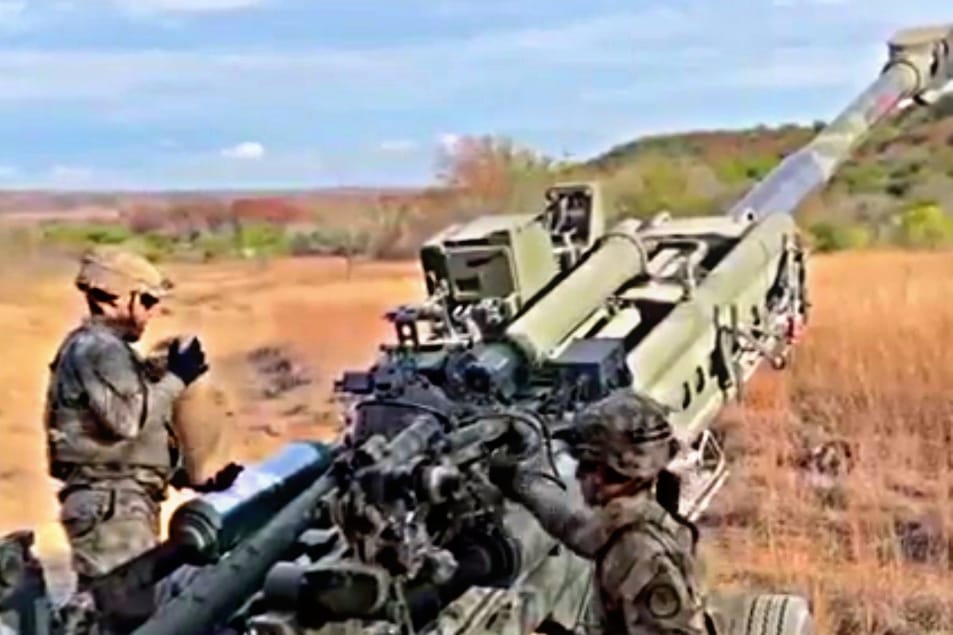
Artillery continues to be a vital element of military operations, particularly in conflicts involving large-scale maneuver warfare and entrenched positions. Despite the rise of precision-guided missiles and drones, artillery remains a preferred choice for providing heavy fire support in many scenarios. Some of the key roles artillery plays in modern warfare include:
1. Fire Support for Ground Troops
Artillery is often used to provide fire support for infantry and armored units, either in the form of bombardments or suppression fire. In offensive operations, artillery is used to soften up enemy defenses, destroy equipment, and demoralize enemy forces. In defensive operations, artillery can prevent enemy advances and disrupt supply lines.
2. Siege and Urban Warfare
In urban environments, artillery is particularly useful for suppressing enemy positions in buildings and bunkers. Modern artillery shells, especially guided ones, can be used to target specific structures or enemy assets without causing widespread destruction to surrounding areas.
3. Fire Support for Special Operations
Artillery provides critical fire support for special forces and commando units, who often operate behind enemy lines. The ability to deliver concentrated firepower over long distances allows special forces to conduct high-risk operations with greater confidence, knowing that artillery can be called upon for support if needed.
Conclusion
Artillery has undergone significant evolution over the past few centuries, from its humble beginnings as rudimentary siege weapons to the highly advanced, precision-guided systems used by modern militaries. With the development of self-propelled howitzers, guided artillery shells, and automated artillery systems, artillery remains a potent force on the battlefield. Despite the rise of newer technologies like drones and ballistic missiles, artillery continues to play a critical role in modern warfare, providing heavy fire support for ground troops, strategic bombardments, and counter-battery operations.
The future of artillery looks promising, with continued advancements in automation, guidance technology, and mobility. As long as large-scale military operations and ground warfare remain part of global security dynamics, artillery will remain an essential and ever-evolving component of military strategy.

